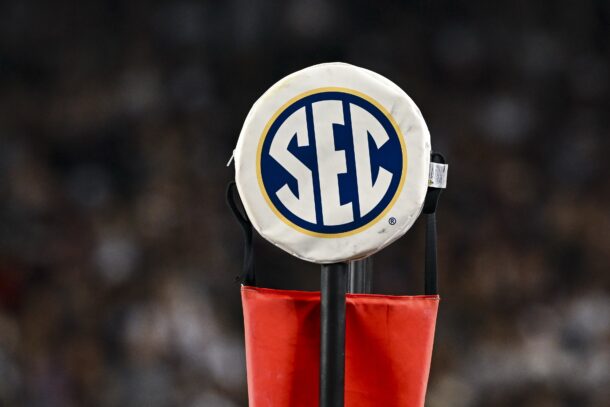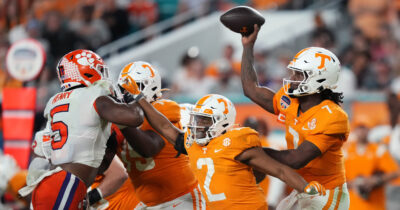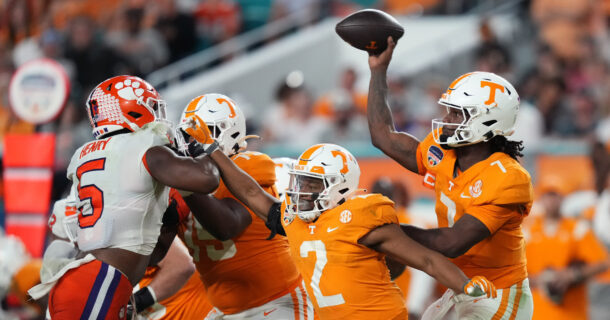By exploiting mismatches, Alabama’s offense may be more explosive than ever
TUSCALOOSA, Ala. _ Normally when you hear other programs talk about the University of Alabama offense they mention things like physical play, running the ball and grind-it-out football.
This season, though, the Crimson Tide is trying to add another dimension to that, not necessarily with a new element, but something that could provide a significant advantage.
The term is “mismatch,” and in addition to dealing with running backs like T.J. Yeldon and Derrick Henry, and potent wide receivers including Amari Cooper, DeAndrew White and Christion Jones, it’s a wrinkle that will definitely be more problematic this season.
Nick Saban even used the word mismatch when talking about junior running back Kenyan Drake and tight end O.J. Howard, although for very different reasons.
“Kenyan, he has great speed,” Howard elaborated. “I think I have pretty good speed, too. Most importantly is the size for me. I’m a really tall guy, I’ve gained a little weight this year. That’s probably one of the biggest advantages I could have this year.
“Kenyan, he’s really a scat-back kind of guy. He’s really quick. He can make you miss with one move. He gets you open space, it’s hard to bring him down.”
Drake’s ability to burst through the hole helped him accumulate 92 carries for 694 yards, and 14 receptions for 167 yards last season, although his production tapered off at the end. Part of that was due to his four fumbles, three lost, but all indications are that the coaching staff’s increased focus on not having the ball hit the ground – by anyone, not just running backs – is paying off.
Meanwhile, those who saw the LSU game last year, when Howard turned a slant pass into a 52-yard touchdown, are already well aware of his potential. Howard had 14 receptions for 269 yards and two touchdowns, and his 19.2 yards per catch average was only exceeded by Henry, who scored a 61-yard touchdown on his only reception.
Although he’s hoping to become college football’s version of Jimmy Graham, what’s kept Howard from being an even bigger force on the Alabama offense is his blocking.
“Brian Vogler really played well for us as an on-the-line tight end,” Saban said. “I think O.J. Howard for a freshman had an outstanding year. I think we did get a lot of production out of those guys, but those guys have got to be multi-talented. They have to be able to block, they have to be instinctive players that can find openings in the passing game and become threats as receivers as well as being very physical players for us.
“It’s hard to run the ball if you don’t have a good tight end if you want to stay in regular.”
Howard is up to 240 pounds on his 6-foot-6 frame – despite giving up his favorite junk food, “Snickers,” and replacing it with ice cream, — and says that during every meeting position coach Bobby Williams tells him, “You’ve got to become a better blocker,” to continually emphasize the point.
It’s paying off as Howard is improving, but Alabama still added some depth by making Ty Flournoy-Smith, who played at Georgia his freshman year, a late addition to the signing Class of 2014 from Georgia Military College, and sophomore Dakota Ball moved over from the defensive line.
But to give an idea of the importance Saban places on explosive plays he has his own definition of the term: A run of at least 13 yards, or a pass of 17 yards or more.
Last season Alabama had 111 explosive plays compared to 52 for the opposition.
2013 Alabama leaders in explosive plays
T.J. Yeldon 28
Kenyan Drake 17
Amari Cooper 12
Kevin Norwood 12
Derrick Henry 10
DeAndrew White 9
O.J. Howard 7
Christion Jones 7
The team goal is nine per game, which Alabama did six times after a season-low four explosive plays in the season opener against Virginia Tech, and just missed with at least seven in five other games.
For years Alabama has been lining up and shifting players into untraditional spots, like former tight end Preston Dial wide or a receiver in the backfield, but with Lane Kiffin taking over as offensive coordinator a higher priority has been placed on getting Alabama’s playmakers the ball in space whenever possible.
Considering the Crimson Tide’s wealth of offensive talent, the result may be a lot more off-to-the races-type plays.
“I’ll move to the slot, more mismatches against defensive backs, safeties,” Howard said. “We can go out wide, things like that. That’s really different this year.”
2013 Alabama yards after the catch (unofficial leaders)
Amari Cooper 413 yards
DeAndrew White 226
T.J. Yeldon 201
Christion Jones 183
O.J. Howard 160
Kevin Norwood 153
Kenyan Drake 135
Total 1,815 of 3,230 receiving yards (56.2 percent)
Christopher Walsh has covered Alabama football since 2004 and is the author of 19 books. In his free time, he writes about college football.







